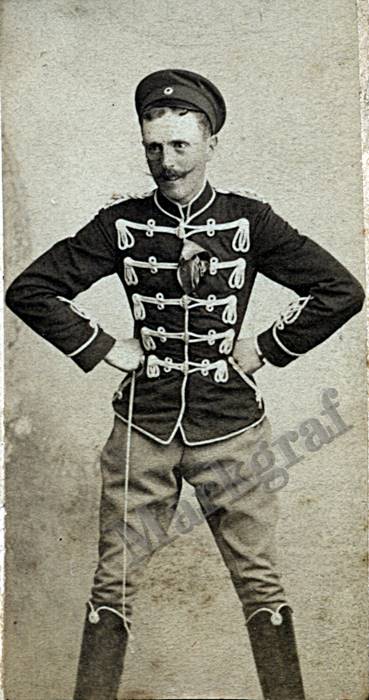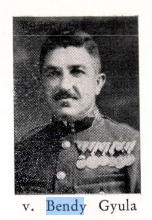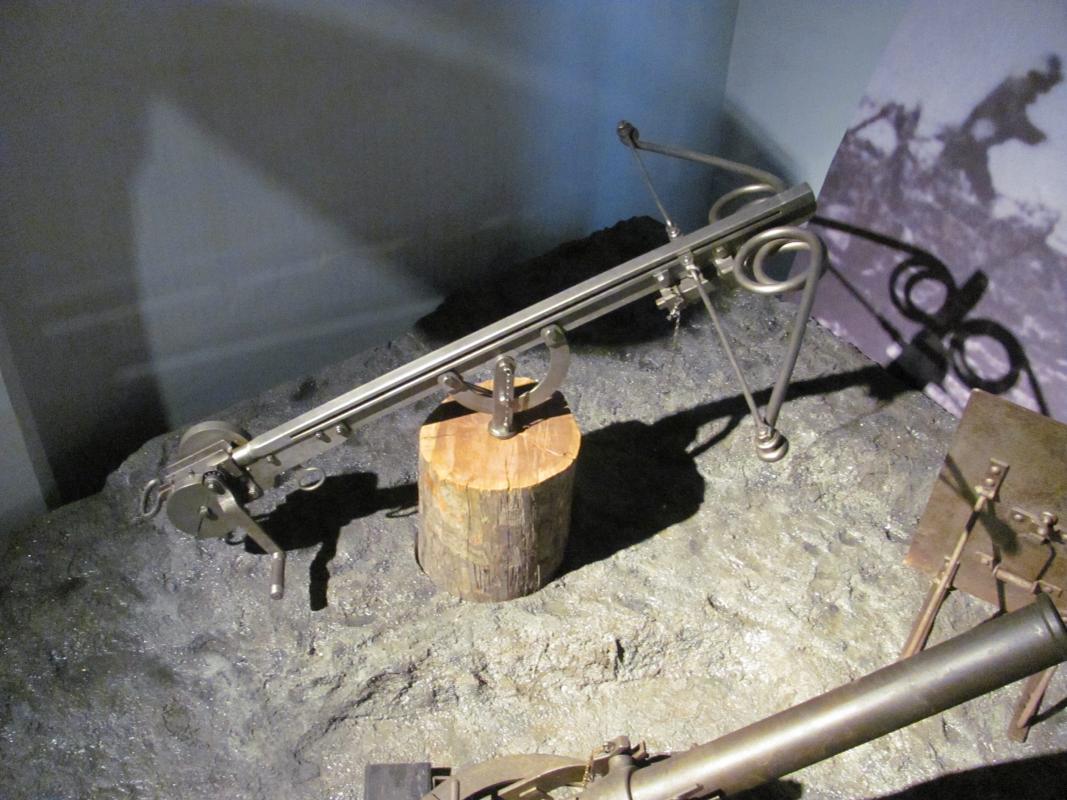-
Posts
564 -
Joined
-
Last visited
Content Type
Profiles
Forums
Blogs
Gallery
Events
Store
Posts posted by Markgraf
-
-
Bayern: Thank you!
0 -

This small size photo was made in Hungary before 1895. It's possible that this guy a real German Hussar, or somebody used the uniform as costume?
Thanks in advance!
0 -
Probably you have right.
Otherwise the editors were mostly native Germans, and they regularly misspelled the ethnic names.0 -
-
On 2016. 08. 21. at 19:14, BalkanCollector said:
My German isn't so good to be honest so I'm having trouble understanding the page on that link. I can only find soldiers which were killed on that link?
Ok, this is the page of the Czech National Library, in English. Might be easier. The pages are in DJVu format so you have to a program to see it (on the page you can find it)
You shoud search in the following, all are full-text search, but the OCR is not the best.
On the first pages of the sheets are a short introduction on all of the main languages of the AH Monarchy.
Verlustliste (Casualty List) Austro-Hungarian KIA, WIA, POW.
http://kramerius.nkp.cz/kramerius/PShowPeriodical.do?id=23834&it=2
Alphabetisches Verzeichnis der in den Verlustlisten (Alphabet Index for the Casualty List). Names and Verlustliste sheet numbers only.
http://kramerius.nkp.cz/kramerius/PShowPeriodical.do?id=23840&it=0
Nachrichten über Verwundete und Kranke (News about the sick and wounded A-H Soldiers).
http://kramerius.nkp.cz/kramerius/PShowPeriodical.do?id=23828&it=0
0 -
Not at all!
One of my great-great-greatfather died in the WWI. I didn't know about him anything until I found him in the casualty list.
You can find the searchable database here:
http://anno.onb.ac.at/anno-suche/#searchMode=simple&resultMode=list&from=1
0 -
All of these settlements were in the territory of the k.u.k 16. Infantry Regiment. They had sulphur yellow collar color.
I found in the official casualty list a Mihajlo Jagodić who was born in Ludbreg in 1884. WIA 1915 April, and captured by the Italians 1916 October. However he was only a Reserve Corporal and served in the 96. IR.
0 -
His rank: Zugsführer.
Medals: 1908 Jubilee Cross, Mobilization Cross 1912-13. According these he served as conscripted soldier in 1908 and called up in 1912-13. His collar color seems light, so I guess he served in a K.u.K infantry regiment.
Do you know where/when was he born?
0 -
Thank You! I'm just a simple Reserve Officer otherwise I'm working in the Museum of Hungarian Military History so this is my job and also my pleasure.
I would like to say "Thank You" for You for preserving the memory of a Hungarian Soldier!
0 -
He didn't have a middle name. His name was Bendy Gyula (Gyula is the Hungarian form of Julius).
According the databases:
Bendy Gyula's highest rank was 1st Lieutenant.
He joined to the army in 1915 to the m. kir. 17 népfelkelő gyalogezred (Royal Hungarian Army 17th népfelkelő Infantry Regiment)
The word "népfelkelő" is hard to translate - this kind of units were formed in case of war.
He fought on the Italian Theather.
On 1916 november 29 he served in the regiments 10th Company. After the company commander killed, the enemy overwhelmed the unit. Bendy Gyula (then officer candidate) saved the companys machine guns. The 1st Class Silver Bravery Medal awarded him for his actions.
Badly wounded in action in 1916 november.
From summer of 1917 he was on the Italian Theather again. Served in the 20th Infantry Division's Assault Battalion - the assault battalions were elite shock troops in the WWI.
Joined to the Vitéz Order in 1924, his registration number was 666 (seriously).
In 1931 the Signum Laudis on emerald ribbon was awarded for him, for the organizing work of the Vitéz Order.
In civilian life he was a school director. He was married with two sons.
The title "vitéz" was inheritable for the first-born sons. His first son called Bendy Kálmán, he joined to the Vitéz Order in 1941.
Kálmán became officer of the Royal Hungarian Air Force. Appointed him to 2nd Lieutenant on 1944 August 20.
Some informations about the Vitéz Order:
https://en.wikipedia.org/wiki/Order_of_Vitéz
Finally I recommend this society for you:
 The portrait of Bendy Gyula in the regimental history.
0
The portrait of Bendy Gyula in the regimental history.
0 -
The Bronze "Signim Laudis" Medal in on emerald green ribbon - he awarded for civilian merits, not as soldier.
On the photo he wears an officer uniform of the interwar period - most likely he was an officer candidate in the WWI (they recieved medals for non-commissioned ranks ) and later promoted to reserve junior officer.
If you tell me his name I can search him in the database of the Vitéz Order. The Vitéz Order was an organization for decorated WWI Veterans.
0 -
Austro-Hungarian experimental grenade-thrower (HGM Wien)
 0
0 -
-
Tiller Mór (Moritz Tiller is a germanized form) was a Hungarian industrialist, one of the greatest uniform-supplier of the Austro-Hungarian Monarchy. Besides the AH royal warrant of appointment he had a same appointment of the Serbian Kingdom and the Persian Empire. Moreover he made uniforms and equipment nearly all of the AH uniformed services, and some foreign armies too.
0 -
-
I think the cross was a central monument of a WWI parcel - the surrounding individual graves were liquidated.
0 -
paja: Great research!
I think found in the Verlustliste Jozsef Kerékgyártó and Balázs Golián too. Both of them served in the 3. Honved Infantry Regiment, and they were wounded in action in November 1914.
According the sources in Zemun were an auxiliary military hospital (on names: Vereinsspital/Vereins Ersatz Spital/Vereinsfilialspital). I think these soldiers died there.
0 -
Franz Knechtsberger artilleryman born 1890 in Pozsony Festungsartillerie-Regiment No 6. died 1914.12.14. Buried in Zemun Franzenstaler Friedhof (Verlustliste No. 109)
http://anno.onb.ac.at/cgi-content/anno?aid=vll&datum=19150121&seite=16&zoom=33
0 -
Yes, it seems - respect!
However the sole survivor a bit exaggeration - maybe by the journalist.
Thanks for sharing!
0 -
On 2016. 03. 22. at 12:23, erikscollectables said:
Hungarian Officer - post 1922
Between 1926-29/30. He wears 1926 M attila, and have no WWI Commemorative Medal (introduced 1929).
0 -
14 hours ago, lieubgvardi said:
Hello,
Years ago I purchased this portrait of Captain John J. .Webbe Weston of Lution Place, co. Surrey, served in the K.u.K. 10th Husarenregiment and died in 1849 at the siege of Komorn as for a handwritten caption on the back of the portrait.
Hope this could be of some interest.
Great painting!
He died 1849 september 24, not in combat but cholera at age 36. The fortress of Komorn (my hometown) capitulated three days later.
At the time of his death he served as the I. class captain of the 3d Chevaux-Leger Regiment, and aide-de champ of general Nugent. He was the Ritter of the Johanniter Orden.
0 -
Yes, major of the General Staff.
The Border Guards (határőr) units had double coolors until 1940 - after that they wore the same green as the infantry, however the name has changed határvadász (literally Border Hunters), and introduced special insignia, the eagle patch and feathers.
The Gendarmerie also had double colors: madder red on steel green.
Previously in the twenties, the paymasters (hadbiztos) had double colors: cornflower blue on black.
0 -
The Soviet Army had a similar system (according the 1970 Uniform Regulation)
0 -
Badge for schoolboys cap:
http://www.erdemrendek-kituntetesek.hu/tartalom/levente-tiszteleg
0




Please help to identify royalties and high-ranking officers
in Austro-Hungarian Empire
Posted
King Ludwig was the Inhaber of the k.u.k. 62 Infanterie Regiment. He wears the colonel uniform of the regiment.